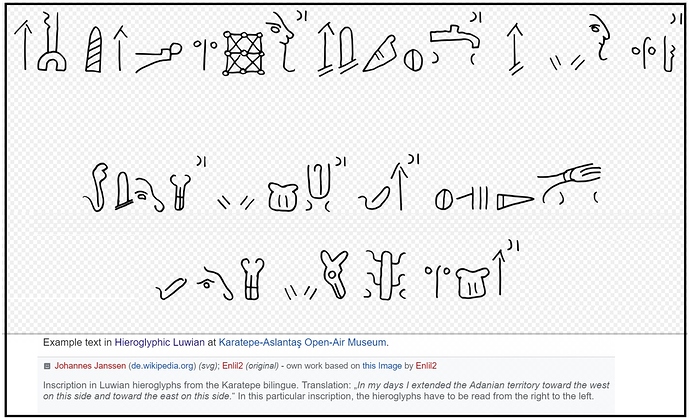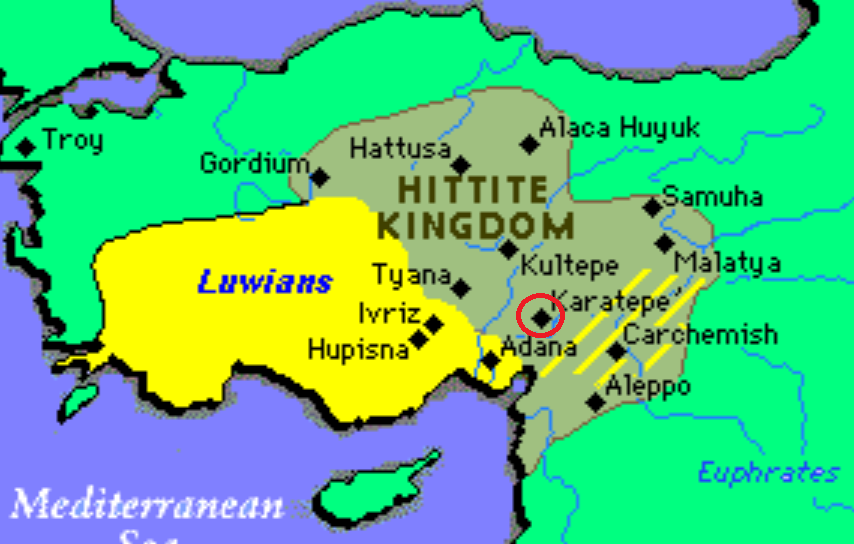@Denn,
But isn’t the point of the Phoenician/Luwian bi-lingual that EL is NOT a completely different God.
When the Akkadians finally possessed that which they had coveted - - the entire Sumerian civilization - -
some divine biographies were co-opted to better fit the Semite sensibilities of the victors.
Enki and Ea were not two gods… they were the same deity … but re-named to more accurately reflect the true nature of Enki. The Sumerians “almost had it right”… but needed to have a few adjustments made!
In Roman mythology, JUPITER becomes the name of the head God of the Olympians. Clearly this divine
name is set apart from Zeus of the Greeks, right? Well, not so fast … When accents and dialects are taken
into consideration, Jupiter is more the Roman “interpretation” of Zeu-Pater! Zeus as Father or Patriarch of the Olympians, whether he is the “father” of all the Gods is not quite the point.
EL, then, seems to be the Phoenician take on the great ANE deity “Ea”. The Phoenicians had a generic word for God = EL… and the God-of-Gods might as well be called “THE EL”. Certainly Ea is no Marduk, but perhaps the Phoenicians preferred their God’s name to be a little vague… so when an Assyrian or Babylonian general showed up … and wanted to see the local MARDUK statue … they could say “Well, you understand of course, we call him something else. We just call Marduk GOD!”
Was this intentional subterfuge, or just “translation”? Herodotus and other classical writers constantly replaced local deity names with the names the Greek readers would recognize.
So… is “EL” a unique God? I think the point of the bi-lingual was to say, “Our God is Like Ea!”
And when the Jewish scribes got hold of some EL literature … would it be that much of a surprise if
the Jewish scribes intended to say: “Your God EL is like YAH!”
Whether or not you agree or suspect that Semite Yah and Akkadian Ea are the same deity… I’m sure it would matter little to the Jewish scribes seeking to expand the Yah / Yahweh franchise. “Whomever you thought you were worshipping … He is Yahweh!”
Does Paul of Tarsus do anything less? When confronted by the Pagan worship of the Unknown God … does he not say:
Act 17:22-23
“Then Paul stood in the midst of Mars’ hill, and said, Ye men of Athens, I perceive that in all things ye are too superstitious. For as I passed by, and beheld your devotions, I found an altar with this inscription, TO THE UNKNOWN GOD.”
And then Paul’s speech turns earnest! “[The deity ] whom therefore ye ignorantly worship, him declare I unto you.”
Act 17:24, 26
“God that made the world and all things therein, seeing that he is Lord of heaven and earth, dwelleth not in temples made with hands; … and hath made of one blood all nations of men for to dwell on all the face of the earth…”
Act 17:28, 30
"For in him we live, and move, and have our being; as certain also of your own poets have said, For we are also his offspring… And the times of this ignorance God winked at; but now commandeth all men every where to repent!"

